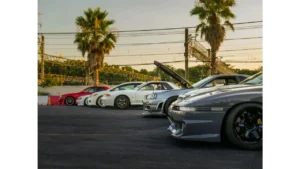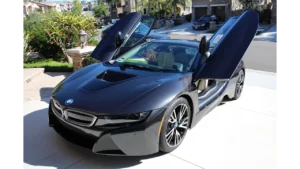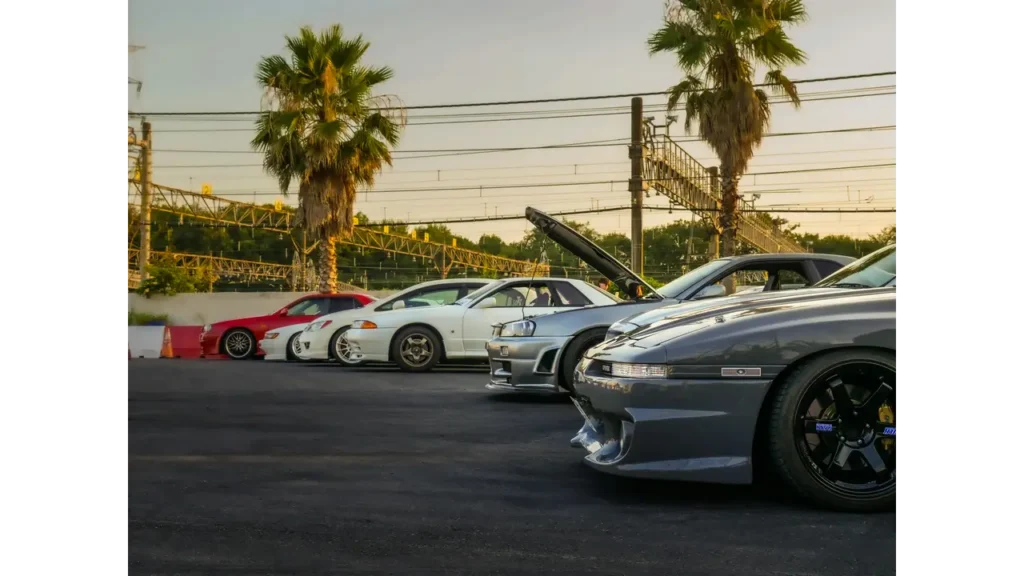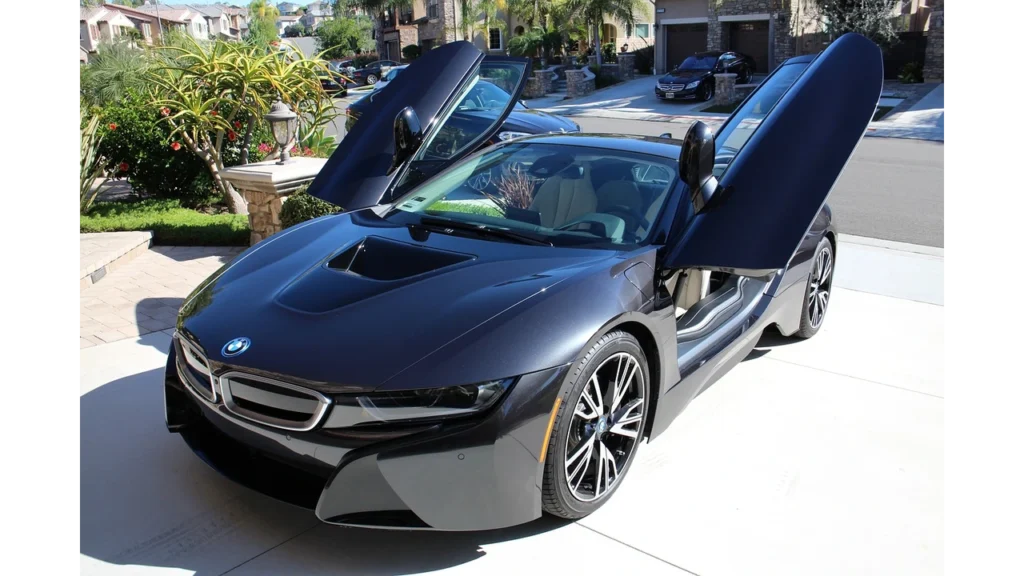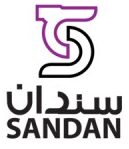Introduction
Oman’s car market has always been a reflection of its terrain, economy, and lifestyle. While luxury SUVs and off-road vehicles dominate many roads, there is a thriving demand for budget-friendly cars under OMR 1,000. This segment attracts students, expatriates on short contracts, and residents seeking a practical secondary vehicle. In recent years, the rising costs of new vehicles and fuel-conscious driving habits have amplified interest in reliable, low-cost used cars.
A car under OMR 1,000 typically represents an older model—often between 10 and 20 years old—with higher mileage but still functional condition. These vehicles are common in Muscat, Sohar, and Salalah, where older Japanese sedans and compact hatchbacks remain popular for daily commutes. Buyers in this range often prioritize basic mobility and minimal maintenance over appearance or technology features.
The appeal lies in immediate accessibility. No heavy loan commitments, lower insurance premiums, and minimal registration fees make this price segment ideal for cost-conscious drivers. However, careful evaluation is essential. Many cars in this category may have incomplete service records or cosmetic imperfections. Choosing wisely can result in a dependable daily driver, while a poor decision may bring recurring repair costs.
Understanding what a car under OMR 1,000 can realistically offer—mechanical stability, verified documentation, and local parts support—is the foundation of smart buying. When sourced from verified marketplaces such as Sandan Oman, where inspections and service history checks are standard, even budget cars can provide solid value and safety assurance.
Key Takeaways (TL;DR)
- Cars under OMR 1,000 are viable for buyers seeking affordable, functional transportation.
- Expect older models with higher mileage but serviceable reliability.
- Benefits include low ownership cost and immediate mobility without financing stress.
- Verified listings from trusted dealers like Sandan Oman reduce risk in this budget range.
Table of Contents
Market Snapshot – Used-Car Supply & Demand in Oman’s Budget Tier
The sub-OMR 1,000 used-car segment in Oman operates as a dynamic secondary market, where affordability meets necessity. Supply primarily comes from owners upgrading vehicles or expatriates reselling before relocation. Demand remains steady due to the high cost of new vehicles and Oman’s wide geographic spread, which makes car ownership essential even in smaller towns.
A review of active listings on local marketplaces such as YallaMotor, OLX Oman, and Sandan shows strong representation from Japanese and Korean brands—particularly Toyota, Nissan, Hyundai, and Kia. Models such as the Toyota Corolla, Nissan Sunny, and Hyundai Accent frequently appear under this price ceiling. Their prevalence is tied to widespread parts availability and low maintenance requirements.
Cars in this price segment usually fall within model years 2004 to 2010, with mileage ranging between 180,000 and 300,000 km. Most are GCC specifications, though some imported variants appear at similar prices. Imported vehicles can occasionally offer better condition but may lack service history or face challenges in parts compatibility.
Demand patterns vary by city. In Muscat, urban buyers prioritize fuel efficiency and air-conditioning reliability. In interior regions such as Nizwa or Ibri, buyers often favor rugged sedans with simple mechanics that can withstand hot conditions.
Seasonal fluctuations are also notable. Listings rise during summer months when expatriate turnover increases. Dealers like Sandan Oman see spikes in inquiries during this period as buyers look for inspected vehicles that can be transferred legally and quickly.
Understanding these supply-demand trends helps buyers time their purchases and compare fair prices. A model priced under OMR 1,000 in Muscat might cost slightly less in Sur or Sohar due to regional demand differences.
What to Check Before Buying a Car Under OMR 1,000
Inspection discipline defines success in this price bracket. Vehicles under OMR 1,000 often show signs of age, and recognizing early indicators of major repairs can save significant cost. Mechanical inspection begins with the engine—look for excessive smoke, irregular idling, and oil leaks around the valve cover and gaskets. A compression test, if accessible, reveals internal wear.
Transmission condition comes next. Manual gearboxes should shift smoothly without grinding, while automatic units should engage without hesitation. Fluid color and smell offer clues—dark or burnt transmission oil signals neglect.
Exterior assessment includes checking for uneven paint or misaligned panels, often signs of prior accidents. In Oman’s climate, underbody corrosion can occur in coastal areas like Sohar and Sur. Inspect door seals, undercarriage, and boot linings for moisture or rust.
Electrical systems deserve special attention, especially in older Korean or Japanese models. Test the air-conditioning, lighting, power windows, and dashboard instruments. Replacement electrical components for common models remain widely available, but major faults can offset the low purchase cost.
Documentation verification is equally critical. Confirm that the car’s chassis number matches the registration card, and ensure traffic fines are cleared. A GCC-spec car typically has better parts availability and durability against heat compared to imports.
Buyers can mitigate risk by using verified listings from platforms such as Sandan Oman, where vehicles undergo inspection and documentation review before listing. Even with a limited budget, these measures provide confidence and transparency.
Thorough checks protect against hidden costs, ensuring that an affordable car remains an asset rather than a financial burden.

Best Brands & Models That Make Sense Under OMR 1,000 in Oman
The used-car market in Oman offers a surprising range of vehicles under OMR 1,000, especially from brands known for longevity and mechanical simplicity. In this price bracket, the goal is not perfection but practicality—cars that can reliably cover daily distances with minimal maintenance costs.
Japanese brands dominate this segment. The Toyota Corolla (2004–2008) and Nissan Sunny (2005–2010) are among the most frequently listed models under OMR 1,000. Their reputation for resilience in hot climates, combined with abundant spare parts, keeps them highly desirable. The Corolla’s fuel efficiency and durable engine components make it a dependable commuter option, while the Sunny’s straightforward design makes repairs easy and affordable even outside major cities.
From Korean manufacturers, the Hyundai Accent and Kia Rio stand out. These models often deliver strong air-conditioning performance—essential in Oman’s summer months—and their replacement parts are affordable. Their value proposition lies in comfort and fuel economy rather than long-term resale.
For buyers seeking slightly larger frames, the Honda Civic and Mitsubishi Lancer offer reliable alternatives. Civics from the mid-2000s maintain good handling and efficient engines, though parts may cost marginally more than for Toyota or Nissan. The Lancer, known locally as a “workhorse sedan,” remains a favorite among taxi drivers due to its durability and simple mechanical layout.
Buyers should approach European brands and luxury imports with caution at this budget level. Models from BMW, Volkswagen, or Mercedes-Benz may appear tempting, but repair costs and limited local parts support can quickly exceed the vehicle’s purchase price.
Selecting a car under OMR 1,000 is about long-term functionality. Vehicles with proven track records in Oman’s climate outperform newer but unverified imports. Trusted marketplaces such as Sandan Oman help buyers identify these solid-value options by filtering listings based on verified condition and history, making it easier to match expectations with reality.
Using a Certified Dealer or Platform for Budget Used Cars
Even when shopping within a strict budget, purchasing through a verified dealer or certified platform offers critical advantages. In Oman’s used-car market, low-priced listings can vary widely in authenticity and condition. Certified dealers like Sandan Oman provide structure, transparency, and protection that private sellers rarely match.
The first advantage lies in inspection standards. Dealers often perform multi-point checks that assess engine compression, gearbox operation, and brake performance—inspections that many private sellers skip. For cars under OMR 1,000, this is particularly valuable because mechanical defects are more common in older vehicles. A pre-sale inspection can reveal whether a car simply needs cosmetic repair or faces deeper structural issues.
Documentation verification is another critical service. Sandan Oman ensures each listed vehicle has clear ownership records, a valid registration, and no pending fines or legal complications. Such administrative clarity accelerates the transfer process and reduces the chance of post-sale disputes.
Certified dealers also help match vehicles to buyer needs. By categorizing cars according to condition, mileage, and usage suitability, they guide buyers toward options with predictable maintenance profiles. This is especially helpful for first-time buyers or expatriates unfamiliar with local regulations.
Contrary to perception, verified listings do not always increase cost. For many low-budget cars, the price difference between private and certified sales is minimal when compared to the value of guaranteed inspection and proper paperwork. Platforms like Sandan also provide after-sale support, ensuring that even affordable cars meet legal and operational standards.
Choosing a certified source converts a high-risk purchase into a manageable transaction, offering genuine peace of mind in Oman’s fast-moving used-car market.
Ownership Cost & Resale Considerations for Cars Under OMR 1,000
Owning a car under OMR 1,000 requires realistic budgeting. While purchase prices are low, running costs depend heavily on the vehicle’s condition and usage intensity. Maintenance, fuel efficiency, and spare parts availability determine whether the purchase remains economical over time.
Maintenance costs for older Japanese or Korean sedans typically range between OMR 80 and OMR 150 annually for oil changes, filter replacements, and basic repairs. Larger repairs—such as clutch replacement or suspension overhaul—can add OMR 200 to OMR 300, often matching a third of the vehicle’s purchase price. For this reason, preventive maintenance is critical. Routine servicing at small local workshops can keep these cars running efficiently for several years.
Insurance and registration are modest compared to newer cars. Third-party insurance can cost as little as OMR 40 per year, and registration renewals are straightforward for vehicles with valid inspection certificates.
Fuel economy remains a defining advantage. Compact sedans under OMR 1,000 often deliver between 13 km/L and 16 km/L, making them suitable for both city and highway travel. Fuel-efficient models such as the Toyota Yaris or Hyundai Accent are particularly appealing for daily commuters.
Resale value at this tier behaves differently. Depreciation is minimal since most cars are already at the lower end of market value. A well-maintained car purchased at OMR 1,000 may resell a year later for OMR 700 to OMR 800, provided the mechanical condition remains stable.
Dealers like Sandan Oman further strengthen resale potential by maintaining vehicle records. Cars purchased through certified channels often command slightly higher resale prices due to verified documentation and inspection history.
Ownership success in this budget range relies on maintenance discipline and proper sourcing. With responsible care and verified purchase, even a sub-OMR 1,000 vehicle can serve dependably for years in Oman’s diverse driving conditions.
Step-by-Step Checklist for Buying Under OMR 1,000
Purchasing a used car under OMR 1,000 in Oman requires a clear, disciplined approach. Because vehicles in this segment vary widely in condition, following a structured checklist helps separate solid buys from risky deals.
1. Document Verification
Begin by confirming ownership authenticity. The seller’s name must match the registration card (mulkiya), and all traffic fines should be cleared before transfer. Check for a valid vehicle inspection certificate and verify that the chassis and engine numbers correspond to the official documents. If the car is an import, confirm that it meets GCC specifications to ensure parts compatibility and easier maintenance.
2. Review of Service History and Mileage Claims
A reliable service record adds substantial value. Cars under OMR 1,000 may not have full dealership logs, but receipts from workshops or parts invoices can still prove consistent care. Be cautious with mileage claims that seem unusually low for the car’s age; odometer tampering is not uncommon in older imports.
3. Physical and Mechanical Inspection
Inspect exterior panels for uneven gaps, mismatched paint, or corrosion—especially in vehicles from coastal regions such as Sur or Sohar. Check under the hood for oil leaks, worn belts, and discolored fluids. During the test drive, note engine noise, vibration, and gear shifts. Brakes should respond evenly without pulling to one side.
4. Electrical and Comfort Features
Air conditioning, power windows, and dashboard electronics should function properly. In Oman’s heat, AC performance directly affects a vehicle’s usability. Replacement compressors are available for common models like Corolla or Sunny, but poor performance may justify a price negotiation.
5. Price Evaluation and Negotiation
Compare prices across online marketplaces such as Sandan Oman, OLX, and YallaMotor to gauge fair market value. When defects are identified, use them as factual negotiation points rather than assumptions. A well-documented car from a certified dealer might cost slightly more but often saves hundreds in potential repairs.
A structured approach transforms what might seem like a gamble into a strategic purchase, ensuring that even a car priced under OMR 1,000 provides dependable transportation.
Frequently Asked Questions (PAA)
Can a car under OMR 1,000 handle daily commuting?
Yes, provided the vehicle is mechanically sound and regularly serviced. Sedans such as the Toyota Corolla or Nissan Sunny are known for reliability and can manage daily commutes within Muscat or regional routes if maintained properly.
Is it better to buy from a private seller or a certified dealer?
Private sellers may offer lower prices but lack verified inspections. Certified dealers like Sandan Oman provide vehicle reports, registration assistance, and safety checks, reducing the likelihood of hidden problems—especially valuable in older vehicles.
Are GCC-spec vehicles more reliable?
GCC-spec cars are designed for the region’s temperature and fuel conditions. They typically feature stronger cooling systems and corrosion-resistant materials, making them preferable to imports in Oman’s climate.
What are the main hidden costs with low-budget cars?
Common expenses include battery replacement, suspension repair, or radiator leaks. These costs can add up if the vehicle hasn’t been maintained. Buyers should allocate an additional 10–15% of the purchase price for immediate maintenance.
How long can a used car under OMR 1,000 last?
A well-maintained Japanese or Korean sedan can serve for two to four years if driven moderately and serviced regularly. Routine oil changes and timely part replacements are key to longevity.
Can such cars pass vehicle inspection easily?
Yes, if brakes, lights, and emissions meet standards. Before transfer, the car must pass the Royal Oman Police inspection, which ensures roadworthiness regardless of age.
Conclusion – Making the Smart Budget Choice in Oman
Finding the right used car under OMR 1,000 in Oman is less about luck and more about precision. This segment rewards informed buyers who balance affordability with mechanical awareness. A carefully inspected, well-documented vehicle can deliver years of reliable service at minimal cost, providing essential mobility for students, workers, and budget-conscious residents alike.
The keys to success lie in realistic expectations and methodical verification. Cars at this price level are typically older, yet models from Toyota, Nissan, Hyundai, and Honda continue to demonstrate lasting value when properly maintained. Buyers should prioritize clear documentation, working air-conditioning, and functional mechanical components over luxury features.
Trusted dealers such as Sandan Oman play a vital role in simplifying the process. Their verified listings, pre-sale inspections, and transparent documentation help buyers avoid uncertainty while ensuring the transaction meets legal and safety requirements.
Owning a car under OMR 1,000 represents an achievable form of independence. With disciplined inspection, thoughtful selection, and guidance from verified platforms, budget-conscious drivers in Oman can secure dependable mobility without financial strain. The right choice offers not only transportation but also stability and confidence on every journey.




